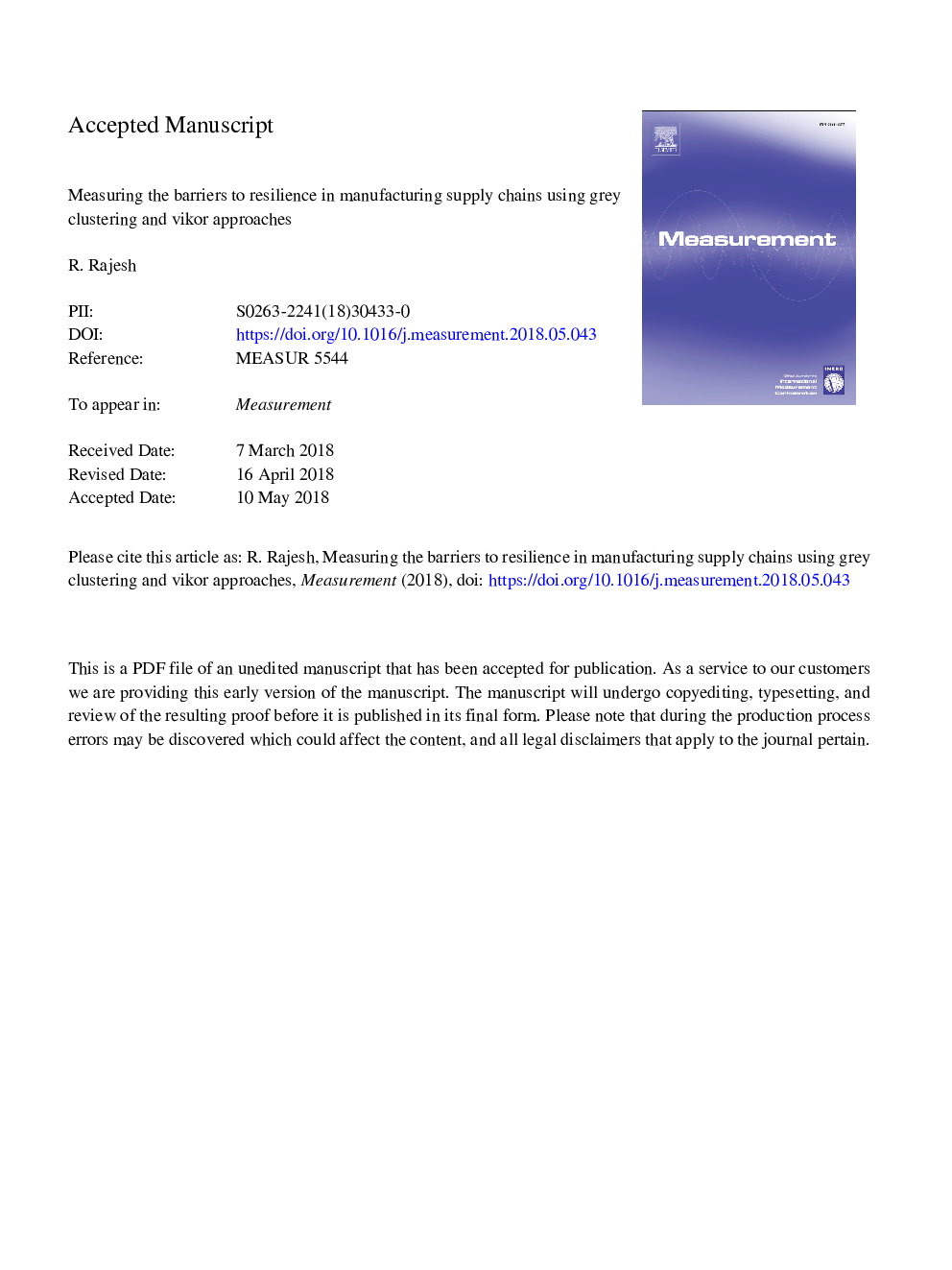| Article ID | Journal | Published Year | Pages | File Type |
|---|---|---|---|---|
| 7120734 | Measurement | 2018 | 47 Pages |
Abstract
Supply chains of today are interconnected intricate networks prone to copious internal and external turbulences. Building resilient supply networks are the possible solutions to reduce, handle, and mitigate the concomitant risks. This research attempts to identify, classify, and measure those barriers in achieving resilience, typically seen in electronic manufacturing supply chains. A methodology incorporating grey clustering algorithm and compromise ranking (VIKOR) methods were used for the classification and measurement of the barriers to supply chain resilience. Managers could perform an initial sorting of the barriers using the grey clustering algorithm to identify those barriers coming under the high importance categories. Then, the VIKOR analysis could be conducted on the selected barriers to effectively prioritize them. The obtained results were subject to sensitivity analysis and were validated using practical case implications. By implementing the proposed methodology for the considered case, the following barriers were identified to be most important; bull whips due to uncertainties in supply, single sourcing, centralization of assets and inability to modify operations in response to challenges. Key managerial implications of the study is that, measuring barriers for reducing supply chain vulnerabilities could lead to better enactment of supply networks with enhanced resilience capabilities.
Keywords
Related Topics
Physical Sciences and Engineering
Engineering
Control and Systems Engineering
Authors
R. Rajesh,
